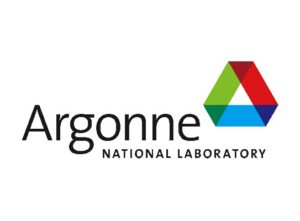
(Rost9/Shutterstock)
In theory, materials science should be a perfect match for AI. The field runs on data — band gaps, crystal structures, conductivity curves — the kind of measurable, repeatable values machines love. However, in practice, most of this data is buried. It’s scattered across decades of research papers, locked inside figure captions, chemical formulas, and text that was written for humans, not machines. So when scientists try to build AI tools for real materials problems, they often run into problems.
A team of researchers from the University of Cambridge, working in collaboration with the U.S. Department of Energy’s (DOE) Argonne National Laboratory, has been tackling that problem head-on. Led by Professor Jacqueline Cole, the group has developed a pipeline that pulls structured materials data from journal articles and converts it into high-quality question–answer datasets. Using tools like ChemDataExtractor and domain-specific models such as MechBERT, they’re building AI systems that learn directly from the same research materials human scientists rely on.
This project is part of a longer collaboration between Cole’s lab and Argonne National Laboratory. The team began working with the Argonne Leadership Computing Facility (ALCF) in 2016, as part of one of the first efforts under its Data Science Program. That early support helped shape the lab’s direction, especially their focus on transforming raw materials data into structured information that could be used to train AI tools. It set the foundation for much of the work they are doing today.
“The aim is to have something like a digital assistant in your lab,” said Cole, who holds the Royal Academy of Engineering Research Professorship in Materials Physics at Cambridge, where she is Head of Molecular Engineering. “A tool that complements scientists by answering questions and offering feedback to help steer experiments and guide their research.”
 Before the model can do anything useful, the raw information needs to be reshaped into something it can actually work with. Cole’s team takes the important findings from published research and rewrites them as simple questions and answers. These might be things a materials scientist would ask during an experiment, or details that usually take hours to dig up. By presenting this knowledge in a familiar, structured way, the AI begins to respond more like a research assistant than a search engine.
Before the model can do anything useful, the raw information needs to be reshaped into something it can actually work with. Cole’s team takes the important findings from published research and rewrites them as simple questions and answers. These might be things a materials scientist would ask during an experiment, or details that usually take hours to dig up. By presenting this knowledge in a familiar, structured way, the AI begins to respond more like a research assistant than a search engine.
Most language models need to be trained from the ground up, starting with broad datasets that may have little connection to real science. That process takes time, energy, and often produces tools that sound confident but miss the details. The approach taken by Cole’s group skips that costly pretraining process entirely. By giving the model focused, well-organized content from the start, they avoid wasting resources on teaching it things it doesn’t need to know. The model is not being asked to figure everything out. It’s being handed the right information in the right format.
“What’s important is that this approach shifts the knowledge burden off the language model itself,” Cole said. “Instead of relying on the model to ‘know’ everything, we give it direct access to curated, structured knowledge in the form of questions and answers. That means we can skip pretraining entirely and still achieve domain-specific utility.”
If you compare Cole’s domain-specific models to general-purpose LLMs, you notice a clear difference: the former are built to reason with scientific logic, while the latter are trained to mimic language. Now that matters in materials science, where precision counts and wrong answers have consequences. A general AI model might generate a fluent, plain language reply, but it won’t necessarily have output grounded in established scientific literature. Cole’s model is built to avoid this by learning only from trusted sources, and not just internet noise.
“Maybe a team is running an intense experiment at 3 a.m. at a light source facility and something unexpected happens,” explains Cole. “They need a quick answer and don’t have time to sift through all the scientific literature. If they have a domain-specific language model trained on relevant materials, they can ask questions to help interpret the data, adjust their setup, and keep the experiment on track.”
 The researchers claim that the method has already shown promise in practice. In one test case, the model trained on photovoltaic data through the Q&A process reached 20% higher accuracy than much larger general-purpose systems. It didn’t need massive training runs or internet-scale data. All it required was just accurate and reliable data.
The researchers claim that the method has already shown promise in practice. In one test case, the model trained on photovoltaic data through the Q&A process reached 20% higher accuracy than much larger general-purpose systems. It didn’t need massive training runs or internet-scale data. All it required was just accurate and reliable data.
Similar results were seen working with mechanical data. The researchers built a domain-specific model named MechBERT, trained on stress–strain data extracted from scientific literature. It consistently performed better than standard tools in predicting material responses.
They even tested the pipeline on optoelectronic materials. The model hit its target performance but focusing less on scaling up, and more on working smarter. It needed 80% less compute than traditional approaches. For labs with limited access to infrastructure, such results are a game-changer.
One of the most practical things about this approach is how little it demands. You don’t need a massive training run or access to specialized infrastructure. Cole’s team has shown that with just a few GPUs, researchers can fine-tune a model using their own materials data. That makes it possible for smaller labs, or anyone outside the AI mainstream, to build tools that actually serve their work.
“You don’t need to be a language model expert,” said Cole. “You can take an off-the-shelf language model and fine-tune it with just a few GPUs, or even your own personal computer, for your specific materials domain. It’s more of a plug-and-play approach that makes the process of using AI much more efficient.”
The researchers emphasized that the system is not designed to replace humans, but rather to allow them to build AI models grounded in material science data. That kind of support, especially in data-heavy fields like materials science, can make a real difference.
Related Items
MIT’s CHEFSI Brings Together AI, HPC, And Materials Data For Advanced Simulations
Argonne National Laboratory Applies Machine Learning for Solar Power Advances
